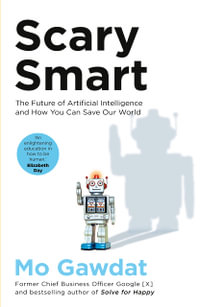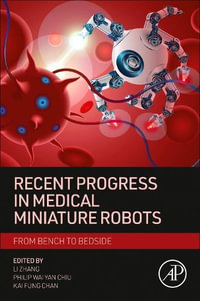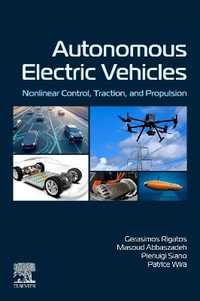Preface; Contributors; Outline of the Book; Terminology; Chapter 1: Teaching Control and Robotics Using the Web, by Spyros G. Tzafestas; Introduction; Review of the Web-Based Control and Robotics Educational Platforms; Web Telerobotics and Internet Delay; General Characteristics of Web-based Virtual Laboratories; General Characteristics of Web-Based Remote Laboratories; Some Examples; Concluding Remarks; Appendix : Software Environments for Developing Web-based Educational Platforms; References; Chapter 2: Control System Design and Analysis Education via the Web, by Harry H. Cheng, Bo Chen and David Ko; Introduction; Ch Control Systems Toolkit; Web Based Control Design and Analysis; Customized Design and Implementation of Web-Based Control Systems Conclusion; References; 65Chapter 3: Web Based Control Teaching, by Suzana Uran and Riko Safaric; Introduction; Motivation for Web Based Control Teaching; Virtual Control Design Laboratory; A DSP-based Remote Control Laboratory; Conclusion; References; Chapter 4: Web-based Control Education in Matlab, by Katarina Zakova; Introduction; Standard Solutions; Alternative Solutions; Client Applications; Conclusions; References; Chapter 5: Object-Oriented Modelling of Virtual-Laboratories for Control Educationby Carla Martin-Villalba, Alfonso Urquia and Sebastian Dormido; Introduction; Implementation of Virtual-labs with Batch Interactivity; Implementation of Virtual-labs with Runtime Interactivity; Case study I: Control of a Double-pipe Heat Exchanger; Case study II: Control of an Industrial Boiler; Case study III: Solar House; Conclusions; References; Chapter 6: A Matlab-Based Remote Lab for Control and Robotics Education, by Marco Casini, Domenico Prattichizzo and Antonio Vicino; Introduction; Automatic Control Telelab; ACT Experiments Description; The ACT Architecture; The Robotics and Automatic Control Telelab; Conclusions; References; Chapter 7: Implementation of a Remote Laboratory Accessible through the Web, by Giuseppe Carnevali and Giorgio Buttazzo; Introduction; Examples of Existing Virtual Labs; Interface; Software Architecture; Hardware Architecture; Experiments; Conclusions; References; Chapter 8: Teaching of Robot Control with Remote Experiments, by Andreja Rojko and Darko Hercog; Introduction; Educational Strategy; The DSP-based Remote Control Laboratory; Control of a Mechanism with Spring; Control of the SCARA Robot; Students' Feedback; Conclusions; References; Chapter 9: Web-Based Laboratory on Robotics: Remote vs. Virtual Training in Programming Manipulators, by Costas S. Tzafestas; Introduction; Remote Labs: Literature Survey; Research Motivation and Objectives; Design of a Virtual and Remote Robot Laboratory Platform; Pilot Study: Research Methodology and Conclusion - Future Research Directions; References; Chapter 10: Design and Educational Issues within the UJI Robotics Telelaboratory: A User Interface Approach, by R. Wirz, R. Marin and P. J. Sanz; Introduction; System Description: The Architecture; System Description: The User Interface; A New Network Protocol: SNRP; Teaching Experiences with the Tele-laboratory Conclusions and Work in Progress; References; Chapter 11: Web-Based Industrial Robot Teleoperation: An Application, by Gianni Ferretti, Gianantonio Magnani and Paolo Rocco; Introduction; System Architecture; Teleprogramming and Supervisory Control Functions; Software Architecture; Teleoperation User Interface; Conclusions; References; Chapter 12: Teleworkbench: A Teleoperated Platform for Experiments in Multi-Robotics, by Andry Tanoto, Ulrich Ruckert and Ulf Witkowski; Introduction; The Teleworkbench System; Robot Platform; Application Scenarios in Research and Education; Challenges for a Teleoperated Robotic Laboratory in Research and Education; Summary and Future Work; References; Chapter 13: Web-Based Control of Mobile Manipulation Platforms via Sensor Fusion, by Ayssam Elkady and Tarek Sobh; Introduction; Prior Work; Design Specifications; Applications; Implementation and Results; Conclusions and future work; References; Chapter 14: Web Based Automated Inspection and Quality Management, by S. Manian Ramkuma and Immanuel A. Edinbarough; Introduction; Web-based AI and QM System - How it works?; Literature Review; System Architecture for AI and QM; Metrology Hardware - Sensors and Instrumentation; Metrology Hardware Integration; Control System Integration; Supervisory System Integration; Enterprise/Management Information System Integration; Overall System Integration - An Example; System Safety; Educational Impact; Conclusion; References; Biographies; Index.

























